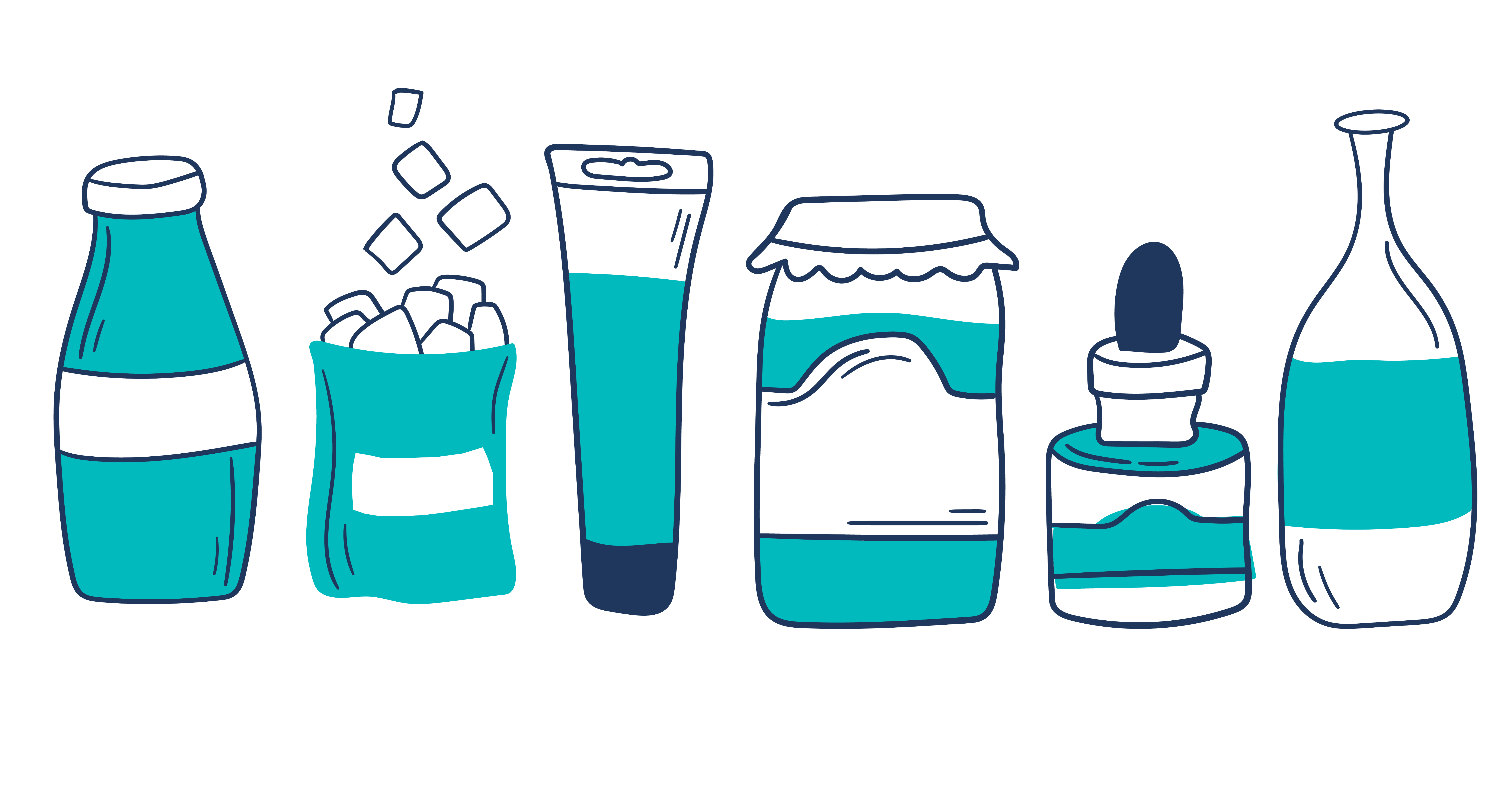Context and quality control: the best practices for packaging translation
When you’re planning to expand your products out into new European markets, you need to think carefully about where packaging translation fits into your scaling plans.
Why? Well, to start with there’s a regulatory side to it – any packaging labels in EU markets have to be translated into all the official languages of the country they’re appearing in. The recent example of Unilever who had to recall Viennetta Vanilla in the UK because allergens were not listed in English on the label serves us as a reminder.
You also might need to run compliance checks on your marketing claims to ensure your packaging doesn’t fall foul of local regulations – particularly when it comes to eco-friendly claims.
But there’s more to it than just complying with the rules. Taking the time to properly and thoughtfully translate your packaging is one of the easiest ways to show your customers that you’re taking them seriously. Because if they’re going to trust you understand what they’re looking for in a product, you have to start by speaking their language.
“These smoothies are condom-free”
The way you approach packaging translation is a question of quality control. If your setup isn’t a thorough, collaborative process, you’re potentially leaving the door open to some costly mistakes.
A robust process starts by choosing the right kind of translation service. Machine translation or AI translation may be cheap and easy, but it can’t be relied upon for packaging translation.
Sometimes you might get lucky and put out an embarrassing but harmless faux pas – like when Innocent used the wrong translation for “preservatives” and told French consumers that their smoothies were proudly condom-free.
Or – to quote an example from a recent packaging label we reviewed for one of our clients that had been machine translated – maybe you’ll accidentally say your products from China were made in Taiwan and veer too close to a major legal headache.
Either way, you just can’t improvise when it comes to packaging translation. People can clock a rushed job at first glance – just have a read through the packaging translation in the image below, recently spotted by French translator Anne-Sophie Ronvaux in Lidl – and that can be a death knell to their trust in your brand. If that happens, you could be facing anything from a product recall to a complete marketing rethink to win them back on side.
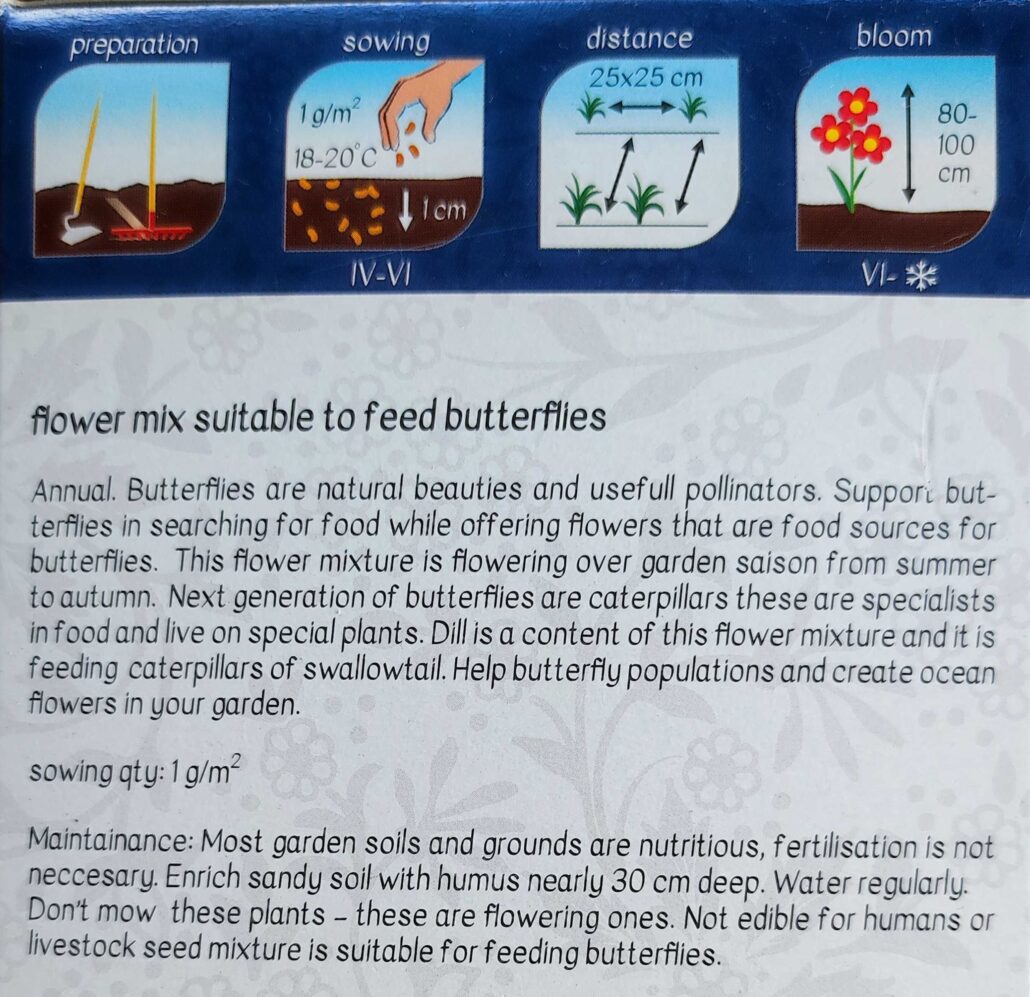
How to approach packaging translation
So what does proper packaging translation actually look like? And if you want to be sure that your translated labels hit the mark with customers from day one, what are the best practices to follow when working with a translation agency?
Make sure translators can see the space, design and context
For us, packaging translation always starts with context. Usually we’ll be sent an InDesign or Illustrator file of the packaging we need to translate – and by that we mean we’re looking at the full flat design, not just the words that make up the copy.
We need to see the space our translation is going to live in if we’re going to do the best job with it. Space is at a premium when it comes to packaging, but with translation we almost always have to contend with text expansion. For example, when translating from English to French or German, copy can swell by as much as 30% just because of the vocabulary and sentence structure.
The images below show a packaging leaflet insert for our client Circular & Co. with translations into eight languages for their popular reusable coffee cups. You can see that space can become tight very quickly – which is why we always recommend creating translation-friendly InDesign files with plenty of white space when designing packaging that will be localised into other markets.
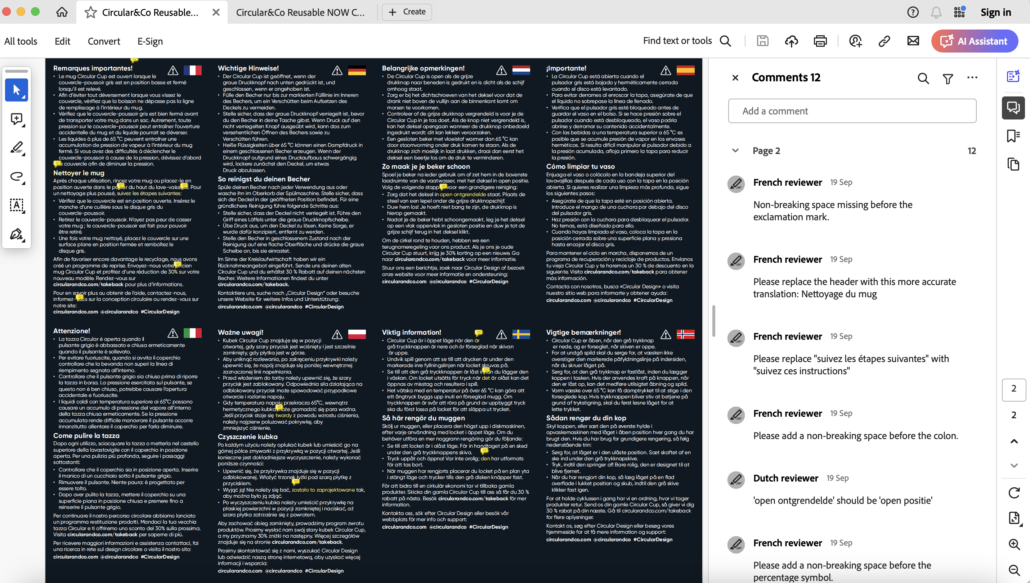
Sharing any additional visual context and illustrations that will appear on the packaging is really useful for our translators as they can clearly see how the product works before delving into the actual translation work:
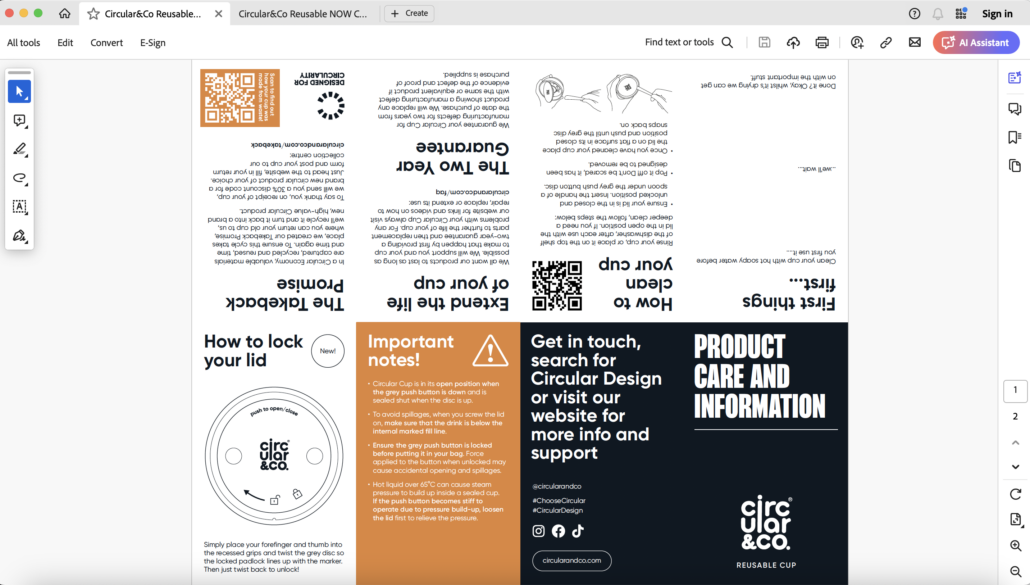
If you’re working with tools like DeepL and Google Translate, these will obviously never see your InDesign file and will just provide their best attempt at a translation whether it fits on your packaging or not. But with a translation team, having a sensitivity to the space and talking it through with your graphic designers is a key part of the process.
Make your packaging translation process collaborative
Once we have the context of your copy in front of us, the next step is to actually do the translation.
Because we have a team of expert linguists, this is often a collaborative process – even if there’s only one linguist working on the translation itself. We’ll always bounce ideas off each other, especially when it comes to the tricky nature of translation within tight packaging margins, and take advantage of an extra pair of eyes when it comes time to proofread and check the copy before sending it back.
Create opportunity for feedback right to the end
After our translation gets back to you, that’s still not the end of the project. Ideally we’d then get to see the design file once the translations have been implemented, and have an opportunity to fine-tune everything on both sides before it’s published.
The image below shows a packaging file for our client Better Nature Tempeh for whom we’re translating the packaging of their delicious tempeh products for distribution in Germany. By sharing the packaging files with us our team are able to see where exactly the translations will appear on the packaging which is key for context. Once translated our linguistic reviewers check the translations again in situ and advise if any last changes are needed before the packaging file goes to print.
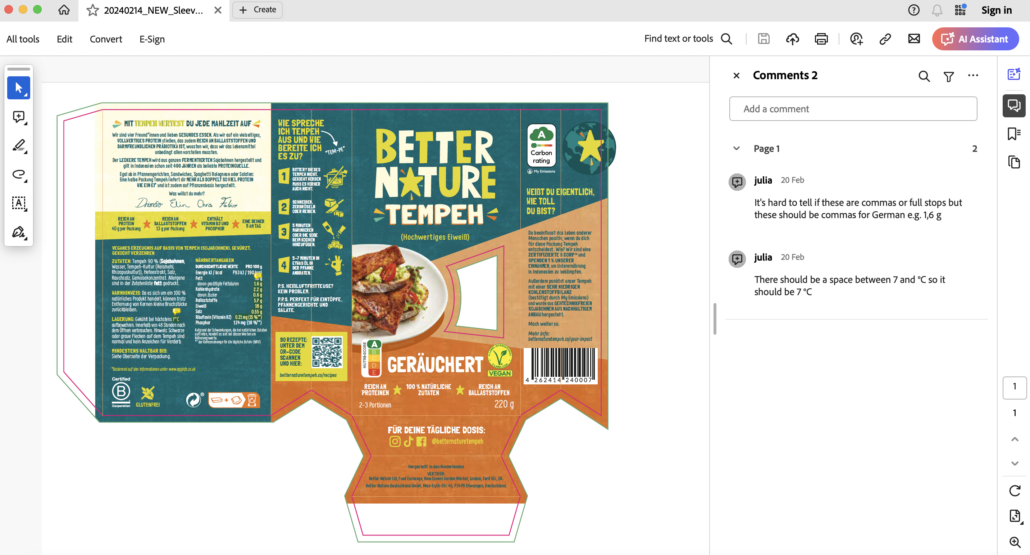
The worst situation is when we send our translation back to a client’s design team and hear nothing back. Even though we’ve done thorough proofing and checks before sending the translation back, a crucial aspect of quality control is getting to see that copy once again in context and being able to advise on anything that might cause problems when it goes to print.
For example, if your global font and style is to use all lowercase, how are you going to implement that in German where nouns are capitalised? Or if you need to hyphenate some words to get around text expansion, are you sure you’re splitting them in a place that makes sense? When we’re feeding back with the design team, we can advise on practical issues like this to make sure you’re not putting simple grammatical errors in front of your customers.
Simplify the packaging translation process
One of the easiest ways to avoid errors creeping into packaging translations at the end of process is to work with a translation partner that can carry out the layout work in-house, and deliver the print-ready and proofread packaging file straight to your inbox. We refer to this as our multilingual desktop publishing service.
With the help of our graphic designers who are experienced in working on multilingual files, we can speed up the graphic design process for our clients, carry out all the linguistic final eye-checks and make any last-minute tweaks before delivering back the fully localised file package, including PDFs with crop and bleed marks, ready for printing.
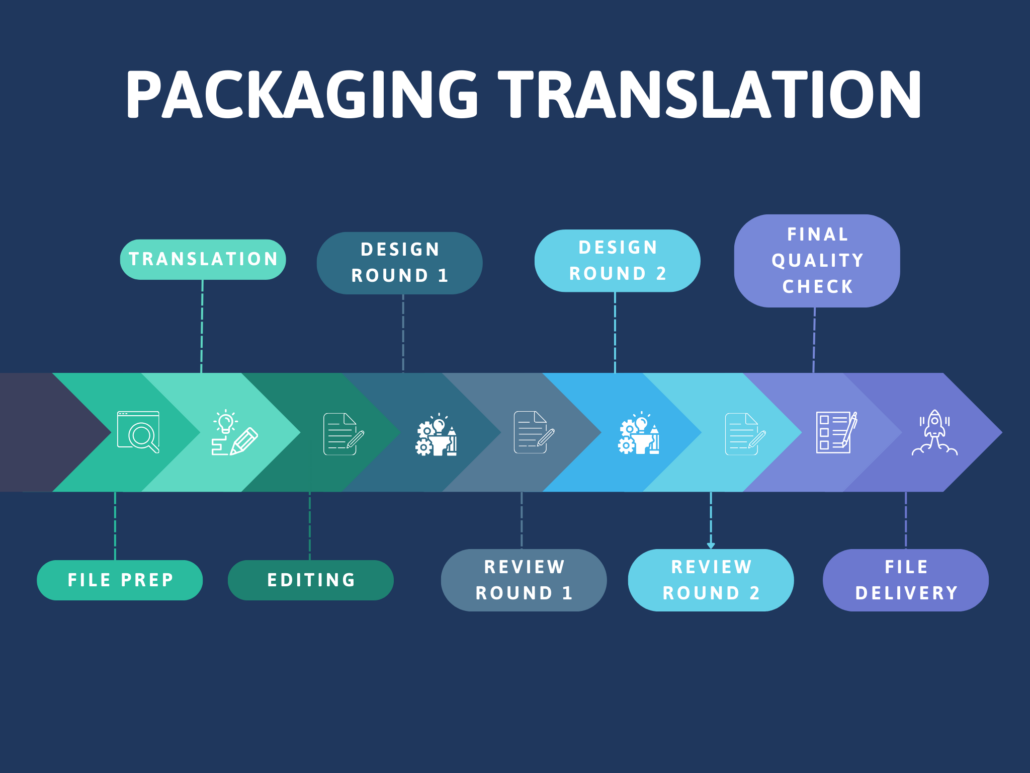
Working with a packaging translation partner
Your translation partner doesn’t just take words from one language and convert them to another.
When you bring them in early on in the process and engage in feedback with them, a packaging translation partner can help you sense-check your messaging – whether that’s pointing out that the correct translation of “without preservatives” into French is actually “sans conservateurs”, or helping you figure out which marketing claims will make the most impact in each market.
To find out more about how we can help with packaging translation for EU markets, get in touch.
